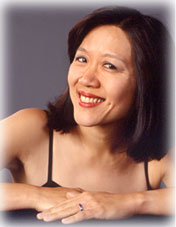|
Symphony
FROM THE NEW WORLD TO THE OLD WORLD
by Peter Lert
Saturday, June 14, 2025
Chamber
MC2 DUO RECITAL CLOSES 222'S SEASON
by Terry McNeill
Saturday, June 14, 2025
Choral and Vocal
CANTIAMO SONOMA'S LUSCIOUS A CAPELLA SINGING IN SEASON ENDING CONCERT
by Pamela Hicks Gailey
Sunday, June 8, 2025
Symphony
SRS SEASON ENDS WITH RESOUNDING TA-TA-TA-BANG
by Terry McNeill
Sunday, June 1, 2025
Symphony
YOUTHFUL VIRTUOSITY ON DISPLAY AT USO'S MAY CONCERTS
by Peter Lert
Saturday, May 17, 2025
Symphony
MYSTICAL PLANETS AND LIVELY GERSHWIN ORTIZ AT FINAL SRS CONCERT
by Peter Lert
Sunday, May 4, 2025
Symphony
VSO'S CONCERT MUSIC OF TIME, MUSIC OF PLACE
by Peter Lert
Sunday, April 27, 2025
VOCAL ELEGANCE AND FIRE AT THE 222'S RECITAL APRIL 26
by Pamela Hicks Gailey
Saturday, April 26, 2025
CANTIAMO SONOMA SINGS AN INSPIRED GOOD FRIDAY MOZART REQUIEM CONCERT
by Pamela Hicks Gailey
Friday, April 18, 2025
DRAMATIC SHOSTAKOVICH SYMPHONY CLOSES PHILHARMONIC'S 25TH SEASON
by Terry McNeill
Sunday, April 13, 2025
|
 |
 Pianist Gwendolyn Mok |
MOK ONE SPEED AND ELEGANCE IN SRJC CHAMBER RECITAL
by Terry McNeill
Sunday, February 16, 2014
After a decade-long absence, Gwendolyn Mok returned to the SRJC Chamber Series Feb. 16 in a gem of a balanced and elegant piano recital.
Before an audience of 140 in the College’s Newman Auditorium, the San Jose-based artist began with Beethoven’s early A Major Sonata, Op. 2, No. 2. She quickly caught the Haydnesque humor and charm of the opening Allegro, and in the florid slow movement the dotted notes in the right hand were sharply etched, and the piano tone was opulent. In the Rondo finale, Ms. Mok deftly took a little volume off the repeated treble notes, a romantic tradition gesture, and it was a polished performance.
Brahms’ first two Intermezzos from Op. 118 showed Ms. Mok to have consummate command of sweeping power and bass-heavy sonority of these autumnal works. The A Minor Intermezzo was played with heft and an improvisatory approach, and the A Major had tonal richness and tenderness. The B Minor Rhapsody from Op. 79 closed the first half and Ms. Mok gave a powerful reading to this turbulent piece, allowing just a little sun to enter the dark texture to lessen the agitation. The final left hand chord at the piano’s bottom effectively tied up the drama.
A novelty came after the intermission, Czerny’s E Flat Nocturne of Op. 647. The pianist in her informative verbal commentary said the piece was a model for the Nocturnes of Field, but actually Field’s innovative works were written long before the 1843 Czerny piece. Czerny was a composer of interest, an example being the excellent Variations from his Op. 7 Sonata on the opera “Iñes de Castro,” and in this afternoon’s performance Ms. Mok’s lovely legato touch was everywhere present. The control of pianissimo was also heard in Liszt’s third Sonetto Del Petrarca 123, and the chordal voicing and careful pedaling were masterly. Just before the ending wispy and quick arpeggios prepared the penultimate note in the treble that was held at protracted length, the audience seemingly holding its breath for the resolution. A special moment.
Liszt’s declamatory and agitated Sonetto Del Petrarca 104 began at a fast tempo and surprisingly was not quite mastered technically, though the bravura was strong enough and the artist’s conception solid and convincing. Small quibbles indeed.
For Ravel’s short Sonatine (1905) there were no doubts about the pianist’s rendition. All was joyously in place, from a big ritard in the first few bars of the Modéré to the whirling phrases of the concluding Animé. The outer movements were played quickly in places but Ms. Mok was able to broaden the musical fabric here and there to gain instrumental resonance. She really owns this striking piece.
At the end of the Sonatine’s Menuet the pianist’s right earring dropped onto her dress and keyboard, eliciting from Ms. Mok a funny comment and some audience titters. It reminded me of a similar incident long ago on the same stage and piano where Angela Hewitt lost an earring during a Liszt Sonata performance, and the Canadian pianist actually stopped playing to look for earring on the floor. It must have been a diamond.
|
